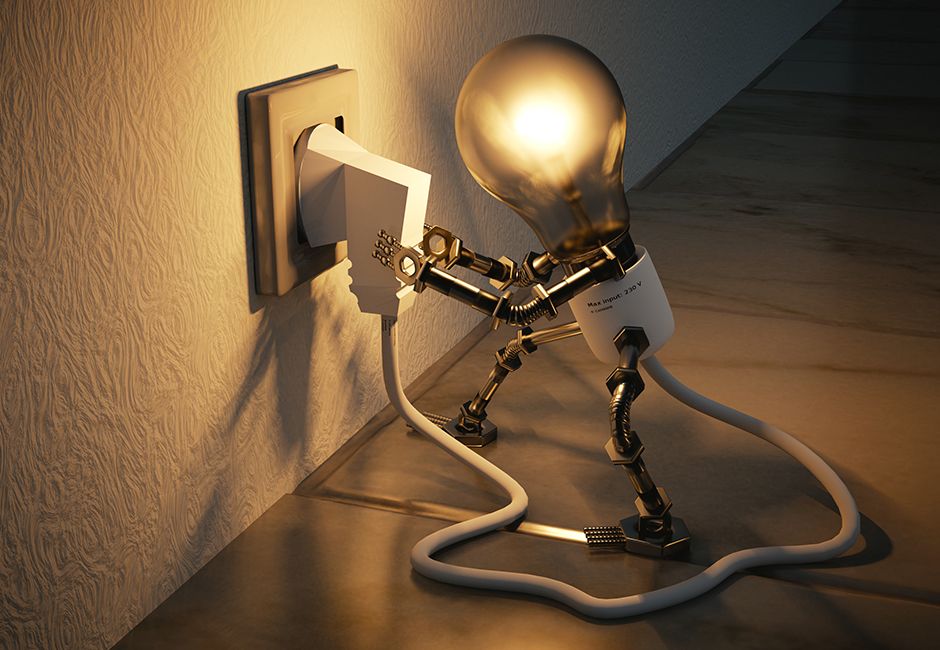IoT: "I am in it" and now?
20.06.2018 – Wilhelm Kleiminger and Michael Schröder
 IoT – Only right in combination with artificial intelligence
IoT – Only right in combination with artificial intelligence
There are many hopes associated with a networked world. But a light bulb doesn't simply go on through Internet access alone. Wilhelm Kleiminger and Michael Schröder of Ergon Informatik explain how companies can implement new digital business cases at different levels using interconnection with the physical world and artificial intelligence applications.
The Internet of Things (IoT) refers to the vision of "intelligent" objects that interact with their environment and humans through sensors and actuators. Thank to advances in electronics and technology, we now find microprocessors and communication modules integrated into billions of items that become "smart" objects. The meaning of the term IoT describes smart, networked all-purpose objects that can perceive and even interact with their environment – a link between the physical and the digital world.
Combination with AI: achieve business benefits with IoT
The promise of the "intelligence" of things arises not only from the connection of the physical and the digital world, but now in combination with applications of artificial intelligence (AI). An electrical load meter does not become a "smart meter" by recording the electrical load (digitally) and making it available to the energy provider over the Internet. The meter only becomes "smart" when it actively helps the user to save energy, e.g. if the user recognises that a freezer needs to be de-iced.
The purpose of using AI is to support people in their actions "with the help of a digital expert". In terms of the networking of the physical world, this can be at different levels:
- Non-networked things can be made a bit "smart" with the use of augmented reality (AR) by recognising them and linking them with additional information from the digital world. For example, employees with a Microsoft HoloLens can operate complex machines without lengthy training or patients can see the side effects of a drug directly on their smartphone with the help of AR.
- The first digital information is available for AI applications through the simple networking of things, allowing for enhanced business cases. For example, a smart heating valve that provides access to its internal data via networking can allow remote diagnostics in the event of a fault, which optimises building maintenance. In conjunction with AI approaches, errors can be detected before they even occur.
- When a group of heterogeneous physical things is networked with software components, we are talking about a cyber-physical system. One example is the electricity grid of the future – the smart grid. Here, electric load meters can communicate not only with the electricity company, but also with decentralised producers such as the photovoltaic system on the roof. If the AI is able to directly influence the physical environment through such a networked system, completely new business cases can be created. The customer can, for example, obtain a cleaning service using the subscription model. The robotic vacuum cleaner communicates with the electrical load meter and transparently calculates its energy consumption for the customer with the supplier. The robotic vacuum cleaner is provided by a digital cleaning company. The customer no longer buys the vacuum cleaner, but the cleaning service.
Challenges
Even if the individual elements (IoT, AI, AR etc.) have a clearly understandable benefit, application faces a whole series of challenges in practice. An overall business case can often not be set up at the beginning because neither the potential for differentiation or savings nor the future market configuration are known. Agile action and learning are mandatory here.
At the same time, however, the basic infrastructure for the IoT devices must be set up and operated. The replaced systems usually have a very long lifetime (e.g. 30 years for an electric load meter compared to two years for a modern smartphone).
The potential of the data (and therefore the use of AI) only becomes visible after it has been collected and analysed. In turn, data collection is technically complex and takes a long time. For an HVAC application (heating, ventilation, air conditioning), sensor data from a variety of building types must be collected under varying weather conditions. That means years of effort and investment in a scalable cloud infrastructure.
Smart approach to success
Despite these challenges, an early start is worthwhile. Companies that rely on IoT and AI at an early stage can offer better products that lead to higher sales and thus more data for optimisation.
Agile action is the order of the day. However, this does not mean that companies should blindly plunge into building an IoT base infrastructure and AI skills. Instead, it is advisable to first of all work out possible potentials and directions of development. Based on this short initial phase, you can take the first practical steps, testing concrete business potential in practice with a few customers and gradually expanding them. Depending on the specific context, market and investment strategy, companies can either gradually develop the current business with the use of IoT and AI or experiment directly with completely new business models.
In practice, companies can sharply accelerate the use of IoT cloud approaches. For example, the Ergon CoreCloud offers a smart module for fast and scalable implementation of such data-intensive IoT / AI applications based on Ergon's years of IoT experience.
Dr. Wilhelm Kleiminger is an alumnus of the research group of Prof. Friedemann Mattern at ETH Zurich. Among other things, he dealt with the intersection between artificial intelligence and the Internet of Things: Intelligent heating controls.
Dr. Michael Schröder has been advising clients on digital transformation and the conception, selection and introduction of innovative IT solutions for more than 15 years. Due to his scientific background, he is a long-standing advocate of data-driven applications and AI.